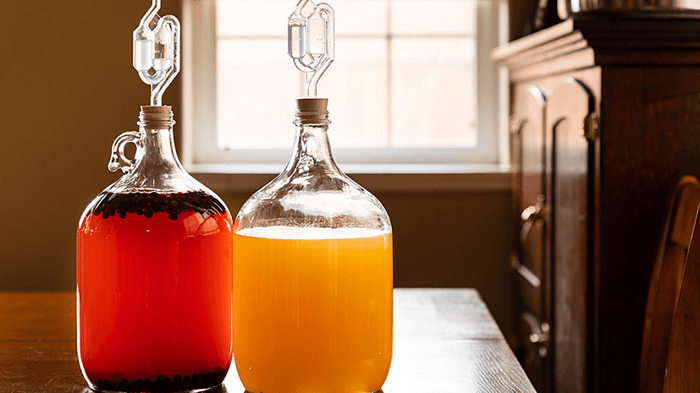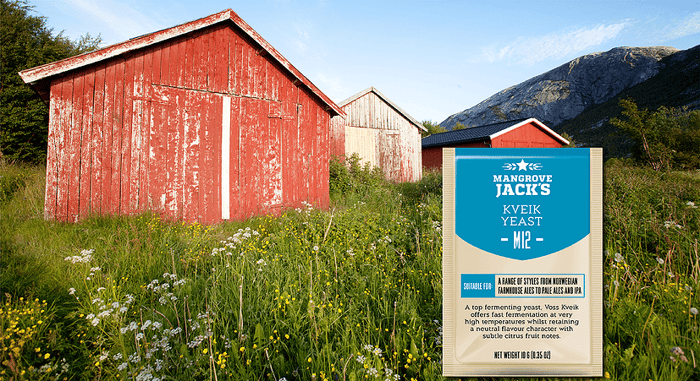It's safe to say that we love mead for its versatility. Meads can be anything from sweet to dry or dark to light. They can be low or high in alcohol and can be carbonated or still. Some contain only honey, while others can include several additional ingredients. We'll dive a little deeper in this 2nd part of our Introduction to Mead Series.
There are so many ingredients that can be used when making mead and you may hear a lot of unfamiliar terms when classifying them - so we'll simplify this. Mead is mainly classified by three things; the ingredients it contains, the ABV and the residual sugar level. Once you understand this, you can continue your mead journey and decide for yourself what mead types you enjoy. Now, let's take a look at the most popular mead varieties.

- Melomel -
We use the term melomel for meads that contain fruits in addition to the honey and water base, making them big on flavour. Melomels can be made with a variety of fruits, including apples, grapes, berries, stone fruits, citrus fruits, dried fruits, pears, figs, pomegranates, most tropical fruit and many, many more.
You will also find subcategories of fruit mead with specific names like Cyser that is made with apples, Pyment that is made with grapes, and other berry or stone fruit meads. The fruits you use can result in widely different characteristics in your final product. In well-made examples, the fruit is both distinctive and well-incorporated into the honey-sweet-acid-tannin-alcohol balance of the mead.
Cyser
A Cyser is a melomel made with apples (generally cider apples). Not to be confused with a cider that relies solely on sugars in the apple to produce the alcohol, the honey in a cyser still provides most of the fermentable sugars. Some of the best examples have the taste and aroma of an aged Calvados (apple brandy from northern France), while subtle, dry versions can taste similar to many fine white wines. There should be an appealing blend of the fruit and honey character but not necessarily an even balance. Generally, a good tannin-sweetness balance is desired, though very dry and very sweet examples do exist.
Pyment
A Pyment is a melomel made with grapes (generally from juice). Not to be confused with grape wine, Pyments specifically rely on honey as the main fermentable sugar. Pyments (like wines) can be red, white, or blush. White and red versions can be quite different and the overall impression should be characteristic of the type of grapes used and suggestive of a similar variety of wine. In well-made examples, there should be an appealing blend of the fruit and honey character but not necessarily an even balance.
Berry Mead
Berry meads are melomels made with berries, such as raspberries, blueberries, blackberries, currants (black, red, and white), strawberries, boysenberries, elderberries, Marionberries, mulberries, lingonberries, huckleberries, cranberries, and more. Generally, any fruit with ‘berry’ in the name would qualify. Different types of berries can result in widely different characteristics, allowing for a variation in the final product.
Stone Fruit Mead
Stone fruit meads are melomels made with stone fruit, such as cherries, plums, peaches, apricots, and mangoes. Stone fruit is a fleshy fruit with a single large pit or stone. In well-made examples, the fruit is both distinctive and well-incorporated into the balance of the mead.
- Specialty Mead -
Spiced Mead
Spiced meads (like Metheglins or Hippocras) are meads with added botanicals or spices. Spices such as cinnamon, clove, nutmeg, rosemary, spruce and others can be used to add a lot of flavour to these special meads.
Rhodomel, Bochet & Bochetomel
Rhodomel translates as 'rose honey' and is a mead made with rose petals or rose hips. Bochet is a mead made with honey that has been previously heated or toasted to add caramelised flavours, whereas, Bochetomel made with toasted honey and fruits.
Braggot
Braggots are mixed with beer or brewed with malt and hops. These meads are closer in style to a beer and are a harmonious blend of mead and beer, with the distinctive characteristics of both. Beer flavours tend to mask somewhat typical honey flavours found in other meads.
Experimental Mead
An experimental mead is a mead where anything goes. This could apply to meads that blend multiple mead subcategories or use additional sources of fermentables (e.g., maple syrup, molasses, brown sugar, or agave nectar), additional ingredients (e.g., liquors, smoke, etc.), alternative processes (e.g., icing), fermentation with non-traditional yeasts (e.g., Brettanomyces, Belgian lambic or ale, etc.), or other unusual ingredients, processes or techniques. Whatever ingredients are included, the result should be identifiable as a honey-based fermented beverage.
If you want to get brewing, check out our recipe for Dry Wildflower Mead or Blueberry Apple Melomel.




